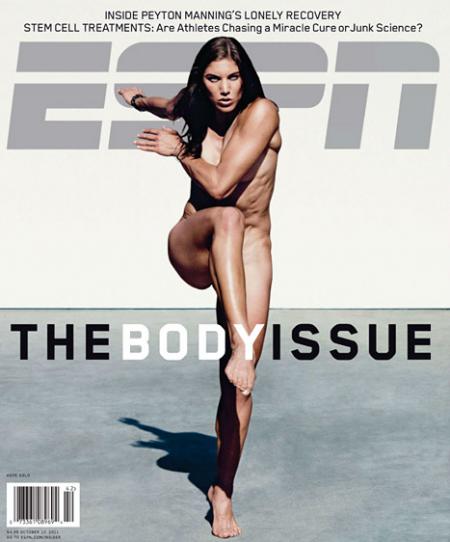Serendip is an independent site partnering with faculty at multiple colleges and universities around the world. Happy exploring!
A response to “Miss Representation 8 min. trailer:” Changing gender stereotypes by increasing visibility of female athletes
The trailer for Miss Representation by filmmaker Jennifer Siebel Newsom describes the power of the media, acknowledging that people learn more from it than any other single source of information. The media is the primary force that shapes our society: “politics, national discourse, and children’s brains, lives, and emotions” (Jim Steyer, CEO, Common Sense Media). Upwards of one billion people use the Internet every day (Marissa Mayer, Vice President, Consumer Products, Google); images are widely available and accessible without restrictions.
The messages disseminated by the mainstream media are pervasive, and more often than not emphasize and perpetuate harmful gender stereotypes. According to Miss Representation, women hold only 3% of clout positions in telecommunications, entertainment, publishing and advertising and comprise just 16% of all writers, directors, producers, cinematographers and editors. Because women are generally not the ones deciding how they are represented in the media, they are often shown as sex objects, valued by their looks rather than their achievements. As a result, “girls are taught that their value is based on how they look, and boys are taught that that’s what’s important about women” (Jean Kilbourne, EdD, Filmmaker, Killing Us Softly).


Intellectual Space and Privacy
I chose the nook and specifically the window seat as my location to examine. It is important to me because it has come to be the space where I spend the most of my time and slowly has come to be known as not just a public space for any Pem West 2nd residents, but as "my corner." I felt that this unconcious claiming of space was interesting especially because when thinking about the idea that privacy, even at Bryn Mawr, was a classed thing that had much to do with the amount of money that each student paid. I felt that I was breaking this previous connection between privacy and money, considering I am not the "ideal" student that Bryn Mawr was initially labeled for. At this same time, this spot makes me wonder about this institution at large, and I see here that money does indeed allow for greater intellectual space, as there are certain students who may not be able to afford the price of Bryn Mawr, and are as such, attending other institutions. Because I am here, claiming the space of the window seat, within this same institution, I wonder whether it is okay for me to be doing so, as I am not the white, upper class, rich student that Bryn Mawr College, as a space, was created for. It was this tension that made me want to further examine a place that I feel to be more of a home than my own room.


Intellectual Space and Privacy
I chose the nook and specifically the window seat as my location to examine. It is important to me because it has come to be the space where I spend the most of my time and slowly has come to be known as not just a public space for any Pem West 2nd residents, but as "my corner." I felt that this unconcious claiming of space was interesting especially because when thinking about the idea that privacy, even at Bryn Mawr, was a classed thing that had much to do with the amount of money that each student paid. I felt that I was breaking this previous connection between privacy and money, considering I am not the "ideal" student that Bryn Mawr was initially labeled for. At this same time, this spot makes me wonder about this institution at large, and I see here that money does indeed allow for greater intellectual space, as there are certain students who may not be able to afford the price of Bryn Mawr, and are as such, attending other institutions. Because I am here, claiming the space of the window seat, within this same institution, I wonder whether it is okay for me to be doing so, as I am not the white, upper class, rich student that Bryn Mawr College, as a space, was created for. It was this tension that made me want to further examine a place that I feel to be more of a home than my own room.


Publications from Pregnancy Education Reform
I have invented an organization, Pregnancy Education Reform, and have included two potential publications from the organization. The first is a collection of pdf images of the pages of a pamphlet entitled, “Intersex: An Introductory Guide for Moms-to-be”. And the second is an open letter to primary care providers explaining how to most effectively use the pamphlet and general advice for making prenatal and postnatal care more sensitive to intersex children and their families. Although the organization intends to empower women and their choices, it does take a position against non-medically necessary genitalia normalizing surgeries in its literature.



















